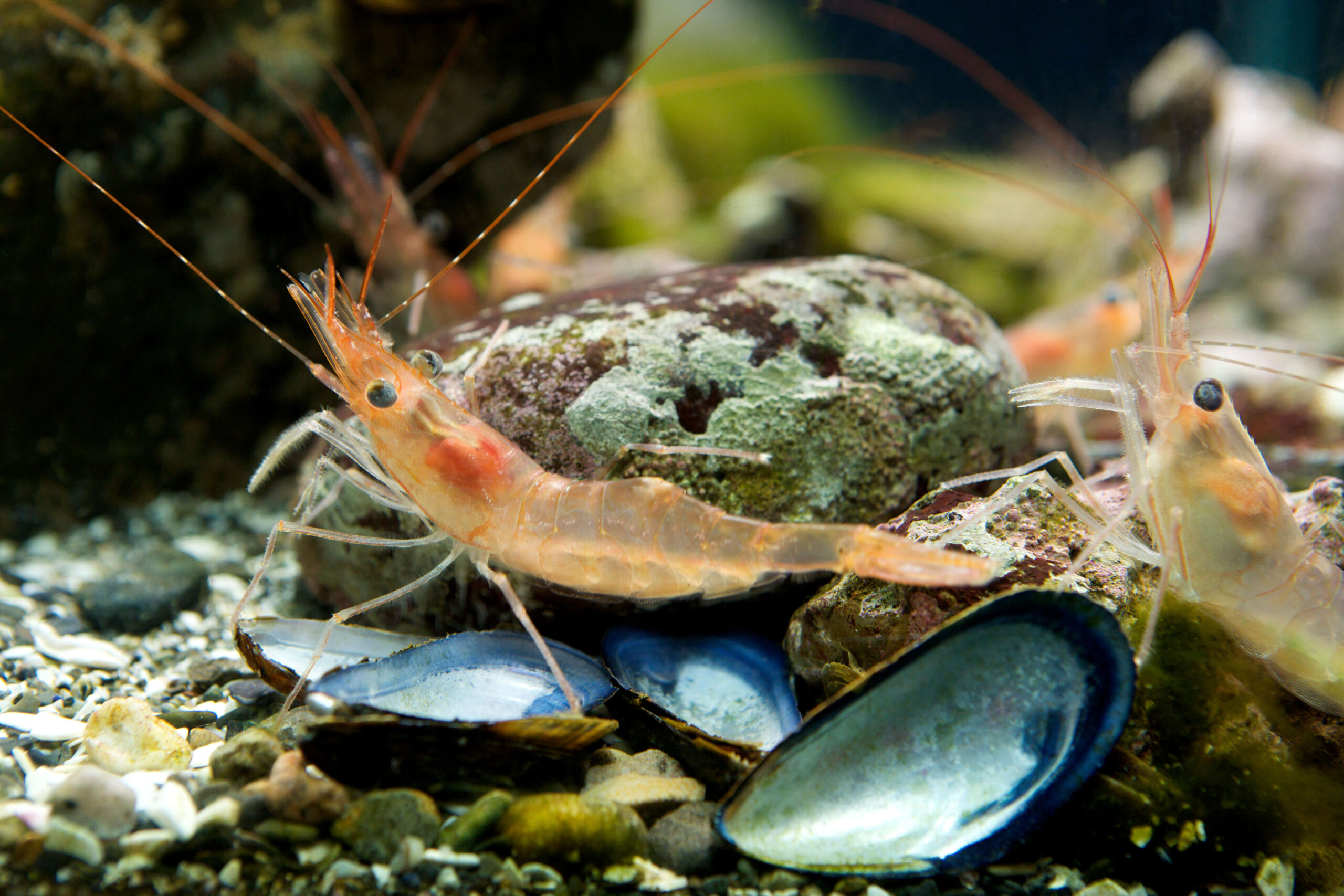
SIZE:
12 cm for the male and 16.5 cm for the female.
LIFE EXPECTANCY:
Up to 8 years.
LIFE CYCLE:
Sexual maturity is reached during the second year of life.
Northern shrimp change sex as they age. At birth, all shrimp are male. Individuals change sex around the age of 4 years, at which time they develop reproductive organs to carry eggs.
Reproduction takes place from July to October. Female shrimp lay an average of 2000 eggs, which they keep under their abdomen for the incubation period. They store the male’s sperm in a special structure. The following year, from March to May, they lay their eggs and release the sperm that had been stored until then. The eggs hatch 6 to 10 months later, in spring or summer.

The inside of the shrimp, including its eggs, can often be seen.
Credit: Robert Baronet, photo taken in Exploramer’s aquariums in 2014.
The northern shrimp’s body is pink to bright red. Most often, its internal organs are visible through its transparent body.
It has spines all over its body. Its shell is rigid. Its long, narrow head seems to point upwards. It has two large eyes and two long antennae. The northern shrimp has 10 slender legs: six for moving and four for feeding.
On the bottom, usually between 50 and 500 m depth but can be found at depths down to 1450 m.
Northern shrimp live on sandy and muddy sea bottoms. They like cold water, ideally at a temperature of 2 to 6 °C.
PREYS:
Plankton
Small invertebrates
Detritus
PREDATORS:
Deepwater redfish
Halibut
Cod
Marine mammals
MACHINES:
Trawl with a Nordmøre grate.
REGULATIONS:
- Specified fishing season
- Quotas
- Regulations on fishing gear
The northern shrimp population initially exploded following the collapse of bottom fish stocks, its usual predators. However, northern shrimp stocks have also been collapsing for several years. In 2024, shrimp fishing was almost shut down; in response, small quotas have been allocated, and the situation remains closely monitored. Among the causes of this collapse: warming waters and the strong return of one of its predators, the deepwater redfish.
A deregulated clock
A study has shown that northern shrimp egg hatching, which depends on water temperature, occurs just after the spring increase in phytoplankton, which is its food supply. As a result, the northern shrimp has adapted its life cycle to its environment, giving itself the best chances for survival. A feat achieved over thousands of years. However, a change in the environment, such as an increase in water temperature, could disrupt this synchronization and thus compromise the chances of survival of the larvae and the species.
BENEFITS:
Northern shrimp is an excellent source of omega-3 fatty acids, protein and vitamin B12.
LET’S COOK:
Soft, melting texture. Delicious meat with a delicate, sweet taste.
Northern shrimp are always sold cooked, whether whole or shelled.
They are perfect for salads and appetizers; for example, in the pitted half of an avocado, with or without eggs and mayonnaise.
OUR CULINARY ADVICE:
- In cooked dishes, add the shrimp at the end of cooking.
- As it is sold cooked, do not recook the shrimp; reheat it only. Otherwise, it will lose its flavour and have a rubbery texture.





